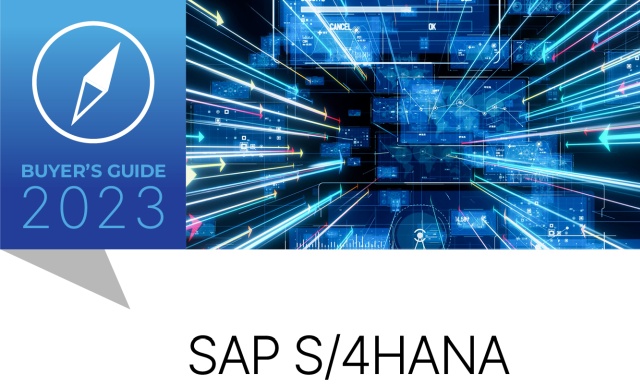Excel-Based Pricing Drains Profit and Agility, Zilliant Warns
Meet the Authors
Key Takeaways
Relying on Excel for B2B pricing can lead to costly errors, slower market responsiveness, and significant compliance and security risks.
Companies using spreadsheets may incur substantial financial losses, with inefficient pricing potentially costing 1% to 5% of revenue annually and missing out on demand-based pricing opportunities.
Modernizing pricing practices through advanced analytics and automation is essential for organizations to improve profitability, maintain competitive edge, and adapt to market volatility.
Excel’s familiarity may make it the default tool for B2B pricing, but its manual processes and lack of integration are quietly erasing profit and agility for companies and limiting their revenue potential. That is the central argument of a Zilliant whitepaper published on the company’s website. It claims that companies relying on Excel spreadsheets for pricing decisions are more exposed to costly errors, facing slower market response and decision making as well as elevated compliance and security risks.
The Zilliant whitepaper explains teams often underestimate the operational drag caused by Excel-based pricing. Manual data gathering and updates consume significant analyst time, and complex formulas, copy-and-paste workarounds, and emailed file versions create confusion over use of the master workbook. The result? The number of inconsistencies goes up, which turn into quoting errors and margin loss. Without ERP or CRM integration, pricing teams are operating with delayed or incomplete data.
Why Spreadsheets Fall Short
Many companies still cling to traditional spreadsheets because they require little training and feel familiar. Yet this familiarity hides significant pitfalls. Simple formula mistakes, for instance, can cascade into pricing errors that affect margins and customer relationships.
Explore related questions
Zilliant explains that Excel offers no real-time integration with ERP, CRM, or market data, which limits insight into competitor behavior, demand shifts, or cost instability. This lack of connectivity makes static pricing the default, preventing organizations from capturing value during high-demand periods or adjusting prices fast enough when costs rise.
Another challenge is the lack of scalability. As businesses expand SKUs, customer agreements, and channels, spreadsheet logic becomes increasingly fragile and difficult to maintain. Governance gaps such as missing audit trails, permission controls, centralized workflows, or file version mastery expose companies to significant compliance risk. Security is yet another concern given the openings for unauthorized access. Sensitive pricing information can circulate broadly without structured permission, raising legal and competitive stakes.
Quantifying the Risks of Excel
The whitepaper provides estimates of the financial impact of relying on Excel, which can be substantial. Inefficient pricing may cost companies 1% to 5% of revenue annually, while margin erosion tied to delayed price adjustments averages 2% to 4%. Labor inefficiencies raise personnel costs, and error-related losses can range from $100,000 to $500,000 per year.
Companies working with spreadsheets also miss out on revenue tied to demand-based pricing opportunities, with potential losses of 3% to 8%. In total, the whitepaper shows millions in avoidable costs for mid-size firms.
Plus, there is the strategic risk. Competitors using automated pricing engines gain real-time pricing adjustments, scenario modeling, and AI-driven insights into customer behavior. Excel-dependent organizations, on the other hand, react slowly to market changes, which limits their ability to segment effectively and maintain profitable pricing structures as costs shift. Over time, these delays hurt credibility with customers in addition to the impact on margins.
While Excel will continue to serve basic analytical needs, the whitepaper concludes that organizations must evaluate whether spreadsheet-centric pricing can keep up with today’s market volatility. Modern pricing platforms offer automation, governance, and the analytical power required to improve price realization and lift profitability.
What this Means for SAPinsiders
Pricing modernization is a defining factor in the value organizations can extract from SAP environments. Zilliant’s depiction of Excel-driven inefficiencies signals rising pressure on SAP solutions to support dynamic pricing logic, real-time data flows, and consistent governance. SAP architectures that rely on disconnected spreadsheets may face diminished responsiveness and higher operational risk.
Data governance and security expectations are reshaping pricing processes. The spreadsheet-anchored vulnerabilities outlined by Zilliant Reveal the growing importance of centralized, permissioned, and auditable pricing processes within SAP’s compliance-driven framework. SAPinsiders face mounting incentives to replace ad hoc spreadsheet workflows with systemized governance aligned to enterprise standards.
Advanced analytics and automation are key strategies to stay competitive. The above financial figures illustrate the revenue loss tied to static pricing and delayed market response. Integrating algorithmic pricing tools with SAP data models may position organizations to speed up decisions and capture value that spreadsheets cannot surface. This points to a future where SAP solutions depend increasingly on intelligent, interoperable pricing platforms to support profitable growth.






